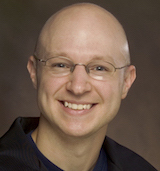
Professor
Department of Geology and Environmental Earth Science
Miami University of Ohio
https://miamioh.edu/cas/academics/departments/geology/about/brudzinski/index.html
| 2014 - Present | Professor | Geology Department, Miami University of Ohio |
| 2010 - 2014 | Associate Professor | Geology Department, Miami University of Ohio |
| 2008 - Present | Affiliate Professor | Physics Department, Miami University of Ohio |
| 2005 - 2010 | Assistant Professor | Geology Department, Miami University of Ohio |
| 2002 | Ph.D., Geophysics | University of Illinois, Urbana, Illinois |
| 1995 | B.S., Physics and Marine Geophysics | Eckerd College, St. Petersburg, Florida |
| 2016 | Induced Seismology Session Convener | IRIS Workshop |
| 2015 - Present | Chair | IRIS Central and Eastern US Seismic Network Working Group |
| 2014 - Present | Instructor | IRIS Summer Internship Program |
| 2013 - Present | Member | IRIS Data Products Working Group |
| 2013 - 2014 | Vice Chair | IRIS Data Management System Standing Committee |
| 2009 | Member | IRIS Education and Outreach, External Program Review Panel |
| 2010 - 2012 | Member | IRIS Data Management System Standing Committee |
| 2010 | Co-Chair, Science Program | IRIS Workshop |
| 2016 - Present | Member | EarthScope Steering Committee |
| 2016 - Present | Member | EarthScope Education and Outreach Subcommittee |
| 2011 - Present | Instructor | EarthScope USArray Data Processing and Analysis Short Course |
| 2011 | Science Program Co-Chair | SSA Annual Meeting |
| 2010 - 2015 | Member | EarthScope Transportable Array Working Group |
| 2010 - 2013 | Member | EarthScope Plate Boundary Observatory Advisory Committee |
| 2010 | Co-Chair, Science Program | EarthScope Institute on the Spectrum of Fault Slip Behaviors |
| 2009 | Planning Committee | NSF-EarthScope and NSF-Margins Facility Enhancement |
| 2002 - Present | Proposal Reviewer | National Science Foundation |
I’m truly honored to be considered as a candidate for the IRIS Board of Directors. IRIS is such an integral part of seismology today that it is easy to take it for granted, but its growth into that role was based on the volunteer efforts of many seismologists. I have been fortunate to interact directly with IRIS core functions over my career, relying heavily on GSN data during my graduate work on mantle transition zone structure, participating in several PASSCAL experiments to better record microseismicity, becoming one of the heaviest DMC data users while data mining for tectonic tremor, and now working on several geoscience education projects with EPO. I have also had the opportunity to serve on standing committees and working groups to learn more about how IRIS functions. Each of these experiences has taught me how important it is to have a centralized set of resources for seismology. Finding the means to maintain the core functions of IRIS in tighter budget times and changing infrastructure will be challenging but crucial for our community. Just as important will be the need to pursue creative ways to advance new initiatives like increasing diversity in our field, enhancing our ability to collect and analyze big data, and growing partnerships with industries. I am eager to continue the tradition of building a Consortium that is strong enough to preserve high quality data sets and dynamic enough to facilitate an ever-changing set of scientific pursuits.